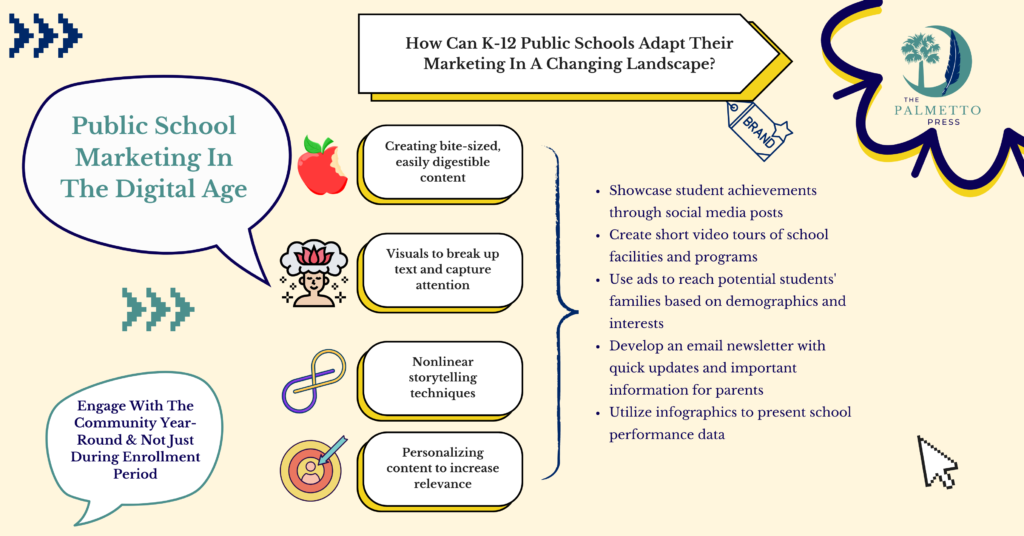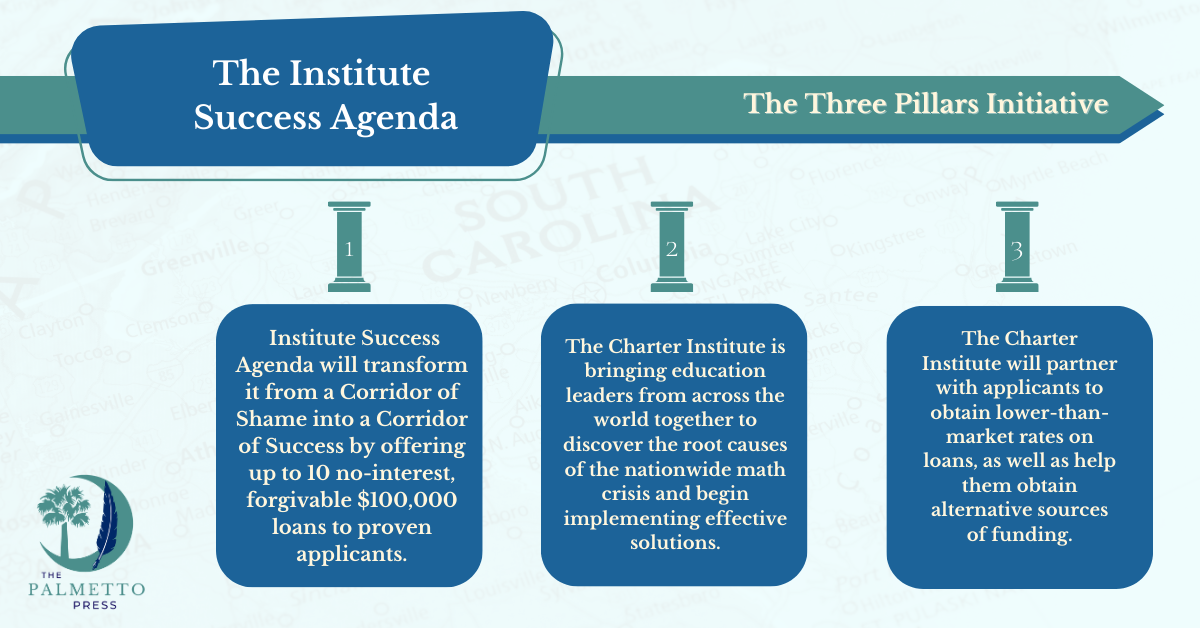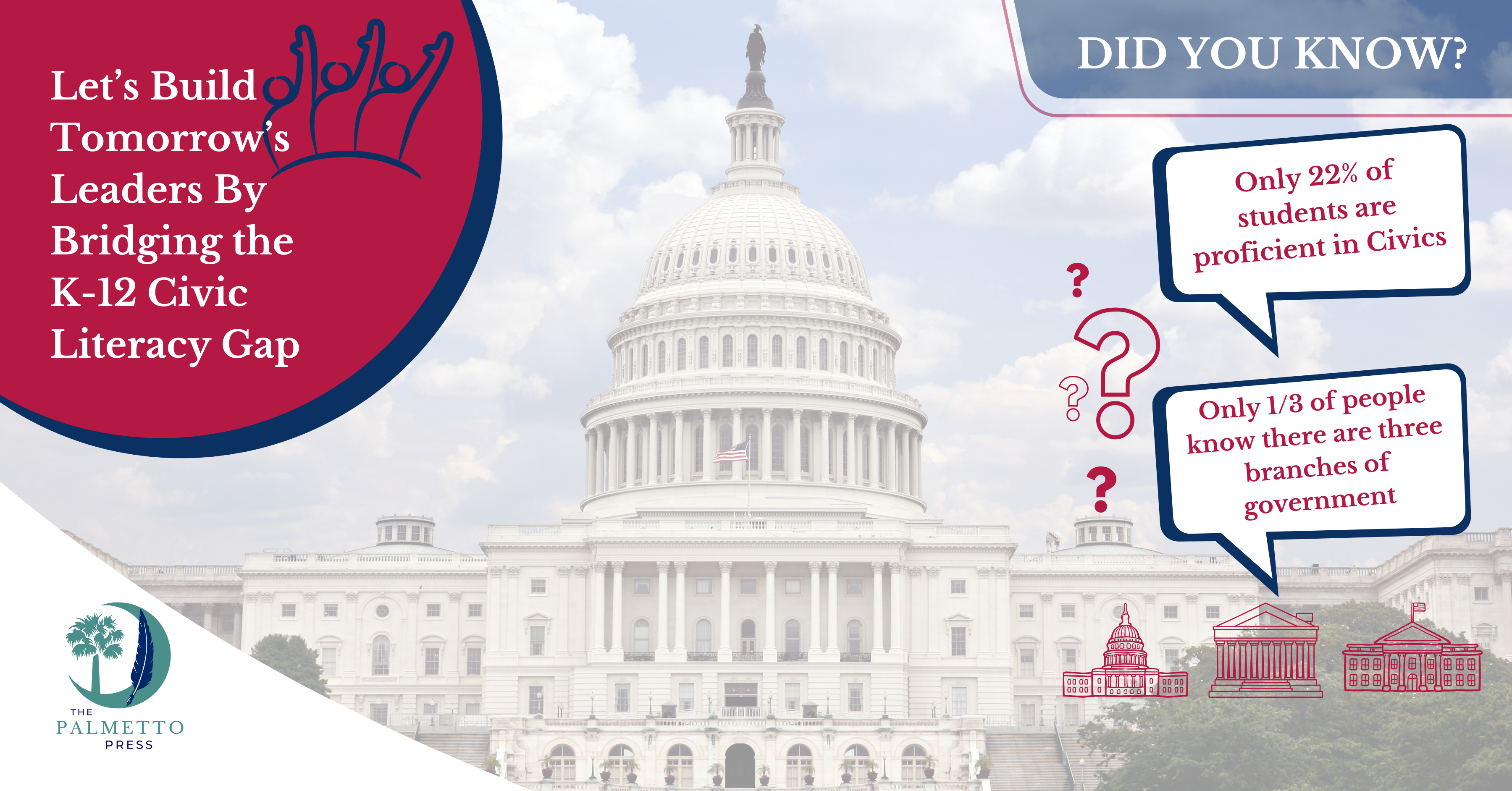Kusuma Buddhiraju
Introduction
Public education has been the cornerstone of American education since the first public school, Boston Latin School, was established in Boston, Massachusetts on April 23, 1635. According to NCES, by 2024 Q1, there are 115,171 public schools, serving 49 million children across the United States, making K-12 education an indispensable service for communities. However, primarily due to projected declines in the school-age population, by fall 2031 total public elementary and secondary school enrollment is projected to decrease by 5%.
This essay argues that in today’s competitive educational landscape, public schools must adopt year-round branding and digital marketing strategies to maintain enrollment, secure funding, and effectively serve their communities. While most industries have employed aggressive marketing and advertising strategies since the dawn of new media, public schools have remained sluggish, partly because parents usually enrolled their children at the neighborhood school and that was that.
The Need for Year-Round Marketing
In this era of a competitive digital marketplace, public schools cannot rely on marketing only during the application season and instead need to chart a 12-month branding strategy to amplify their reputation and support. For instance, the Des Moines school district in Iowa hired a marketing firm to devise a campaign aimed at wooing students back or enrolling new ones. Faced with declining enrollment, including competition from other public schools and the introduction of education savings accounts, the district launched a comprehensive marketing strategy with the tagline, “Come here. Become here”. They had 33,000 students before 2019 and lost 3,000 students during the pandemic years. They’re experiencing an enrollment rise since the marketing campaign launch and currently have around 30,800 students at the end of the 2023-2024 school year.

Digital Marketing: The New Modus Operandi
Digital marketing has become a new modus operandi for schools looking to establish a strong community presence. By utilizing channels such as email, web content, social media, and paid search, schools can cost-effectively reach various demographics and build meaningful connections with their target audience. These digital strategies allow schools to showcase their unique strengths and achievements throughout the year, rather than limiting their outreach to traditional enrollment periods.
To effectively market in this new landscape, schools must understand and adapt to changing content consumption habits.
Social Media Usage Among Adults
The importance of digital marketing becomes even more apparent when considering social media usage among parent-aged individuals. According to a survey by Pew Research, 75% of adults aged 30-49 use Facebook, 59% use Instagram, and 40% use LinkedIn. These statistics highlight the potential reach and impact of well-crafted social media campaigns targeting parents and guardians.
Adapting to Shorter Attention Spans:
Capturing and retaining attention in the digital age has become increasingly challenging. Research indicates that human attention spans have decreased significantly, dropping from 12 seconds in 2000 to 8.25 seconds in 2015. A recent study by Dr. Gloria Mark found that people’s focus shifts to new things roughly every 47 seconds when using electronic devices, down 66% over the past two decades. This decline in attention span emphasizes the need for high-quality, concise, and engaging content.
Given these trends, public schools must prioritize effectiveness over quantity in their marketing efforts. Some strategies to consider include:
- Creating bite-sized, easily digestible content
- Using visuals to break up text and capture attention
- Implementing nonlinear storytelling techniques
- Personalizing content to increase relevance
By focusing on these approaches, schools can create content that resonates with parent-aged social media users while accommodating shorter attention spans. The goal is to deliver value quickly and efficiently, ensuring the message is received before the audience’s attention shifts elsewhere.
Effective Digital Marketing Tactics for Schools:
To illustrate how schools can implement these strategies, here are some specific examples:
1. Showcase student achievements through brief, engaging social media posts
2. Create short video tours of school facilities and programs
3. Use targeted ads to reach potential students’ families based on demographics and interests
4. Develop an email newsletter with quick updates and important information for parents
5. Utilize infographics to present school performance data in an easily digestible format
Financial Implications For School Districts
The financial implications of declining enrollment underscore the urgency of adopting comprehensive branding strategies. Even a modest 1% loss of enrollment adversely affects district finances, and further enrollment losses can potentially lead to budget cuts and school closures. However, investing in marketing and branding efforts can yield significant returns in curbing the enrollment bleed.
Cost-Benefit Analysis of Marketing Investments:
According to EdWeek, in Des Moines’ case, the district spends about $300,000 on marketing efforts, which comes from a grant awarded by a local company. With Iowa’s per-pupil spending at roughly $8,000, attracting just 40 additional students could translate to $320,000 in funding, making the investment worthwhile.
Let’s consider a hypothetical scenario:
- Marketing budget: $100,000
- Per-pupil funding: $10,000
- Goal: Attract 15 new students
If successful, this marketing effort would result in $150,000 in additional funding, providing a 50% return on investment. Even if only 10 new students are attracted, the district would break even on its marketing investment.
As Vamshi Rudrapati, COO of the Charter Institute at Erskine, points out, “Schools and districts are and cannot be in denial about the fact that families have choices, and it is vital to accommodate budget toward marketing and branding to build an engaging, virtual community of support. These avenues are key to student enrollment and retention for the long term.”
Addressing Potential Concerns:
School officials, who previously held reservations about schools diverting their attention or funds toward marketing because of perception, are now underscoring its importance for a thriving public education sector. With the evidence presented above, it becomes clear that effective marketing is not a luxury but a necessity for schools to maintain enrollment, secure funding, and continue providing quality education. The potential return on investment, as demonstrated above, justifies the allocation of resources to marketing efforts.
Beyond Marketing: Improving Educational Offerings
Moreover, these marketing efforts should be paired with tangible improvements and unique school offerings. Lowcountry Leadership Charter School in Hollywood, South Carolina hosts one of the best programs in agricultural technology and culinary arts for its students. This unique offering has given the school a competitive edge for student enrollment and community engagement because the programs meet the needs of their community. By highlighting such distinctive programs and continuously evaluating and improving their offerings, public schools can effectively compete in the evolving educational landscape.
Conclusion
As we stand at the crossroads of tradition and innovation, the future of public education hangs in the balance. The digital age has not only transformed how we communicate but has fundamentally altered the landscape of educational choice. Public schools now find themselves in an unfamiliar position – that of market competitors rather than default providers.
Ultimately, the success of public schools in the digital age will not be measured solely by their ability to market themselves, but by their capacity to adapt, innovate, and deliver quality education that meets the evolving needs of students and society. As we move forward, the challenge for educators, policymakers, and communities is to harness the power of digital marketing not just as a tool for survival, but as a catalyst for reimagining and strengthening the vital institution of public education for generations to come.





